Christ Church is a historic Episcopal church located in Lancaster County, Virginia, north of Irvington. Built in 1732-35, it is notable for its unique Georgian design, and is one of the best-preserved colonial churches in the southern United States. Commissioned by Robert “King” Carter and completed in 1735, Christ Church retains most of its original elements, including its molded-brick doorways, classical entablature, high-backed pews, triple-deck pulpit, stone pavers, and baptismal font. The elaborately carved tombs of Robert Carter and his two wives stand in the churchyard
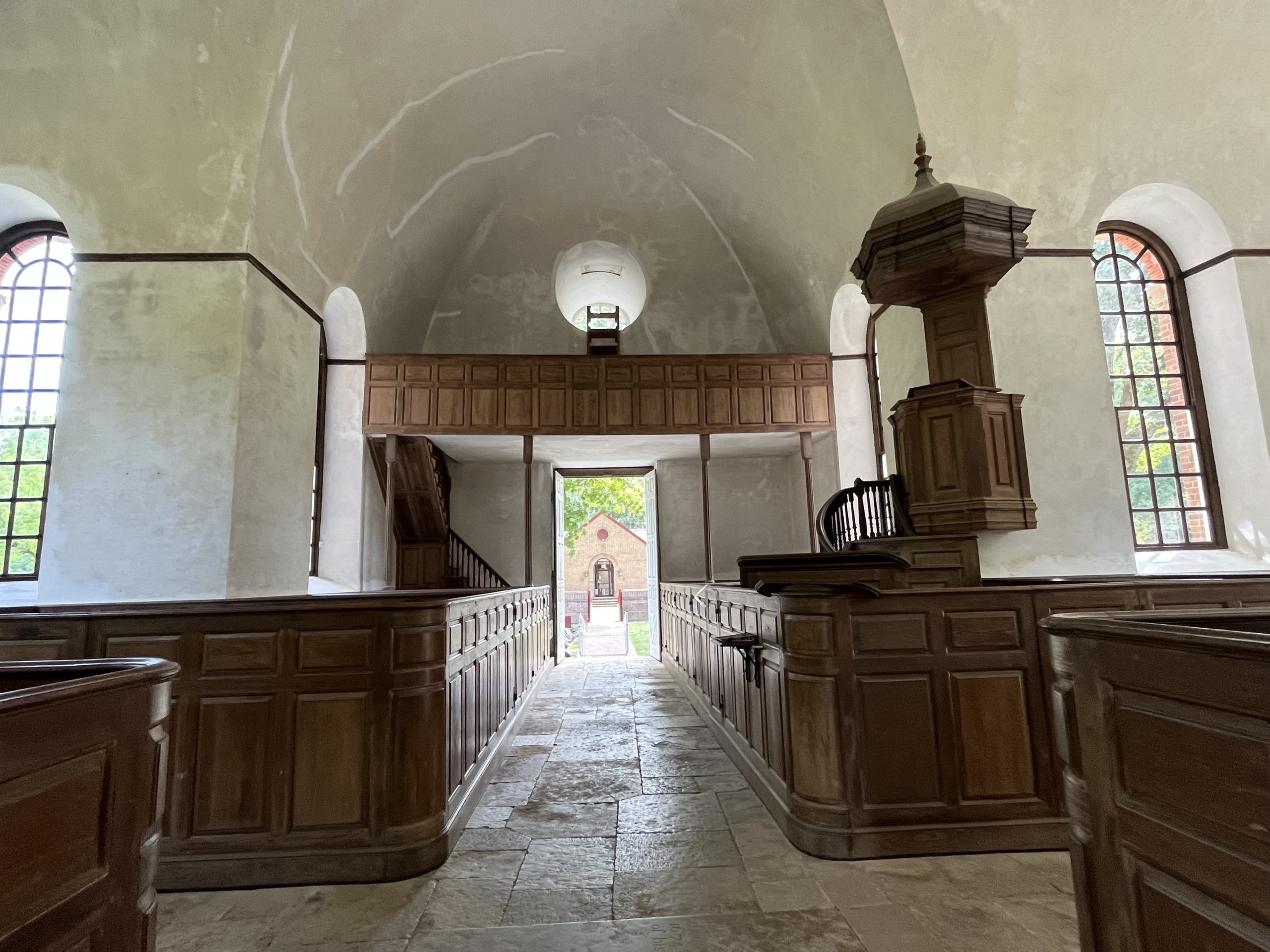
Photo of the interior of the Christ Church, September 2022. Photo credit: T.G. Schurr
Historical Background
Christ Church is a historic Episcopal church located near Weems in Lancaster County, Virginia, Built in 1732-35, it is notable for its unique Georgian design, and is one of the best-preserved colonial churches in the southern United States. The church is the only colonial Virginia church that still has its original high-backed pews and one of two that has maintained its original three-tiered pulpit.
The first church erected at the site was a wooden building, the construction of which was funded by powerful landowner John Carter in 1670. Born in London, England in 1613, John sailed to Virginia in 1635 and later settled in Lancaster County, where he established the Corotoman plantation and became a prominent tobacco planter, merchant, and political figure. Carter died before the construction was completed in 1670, but was buried in the chancel of the original Christ Church, along with four of his five wives and two of his six children. Today, his grave marker lies in the the chancel of the 1735 Christ Church.
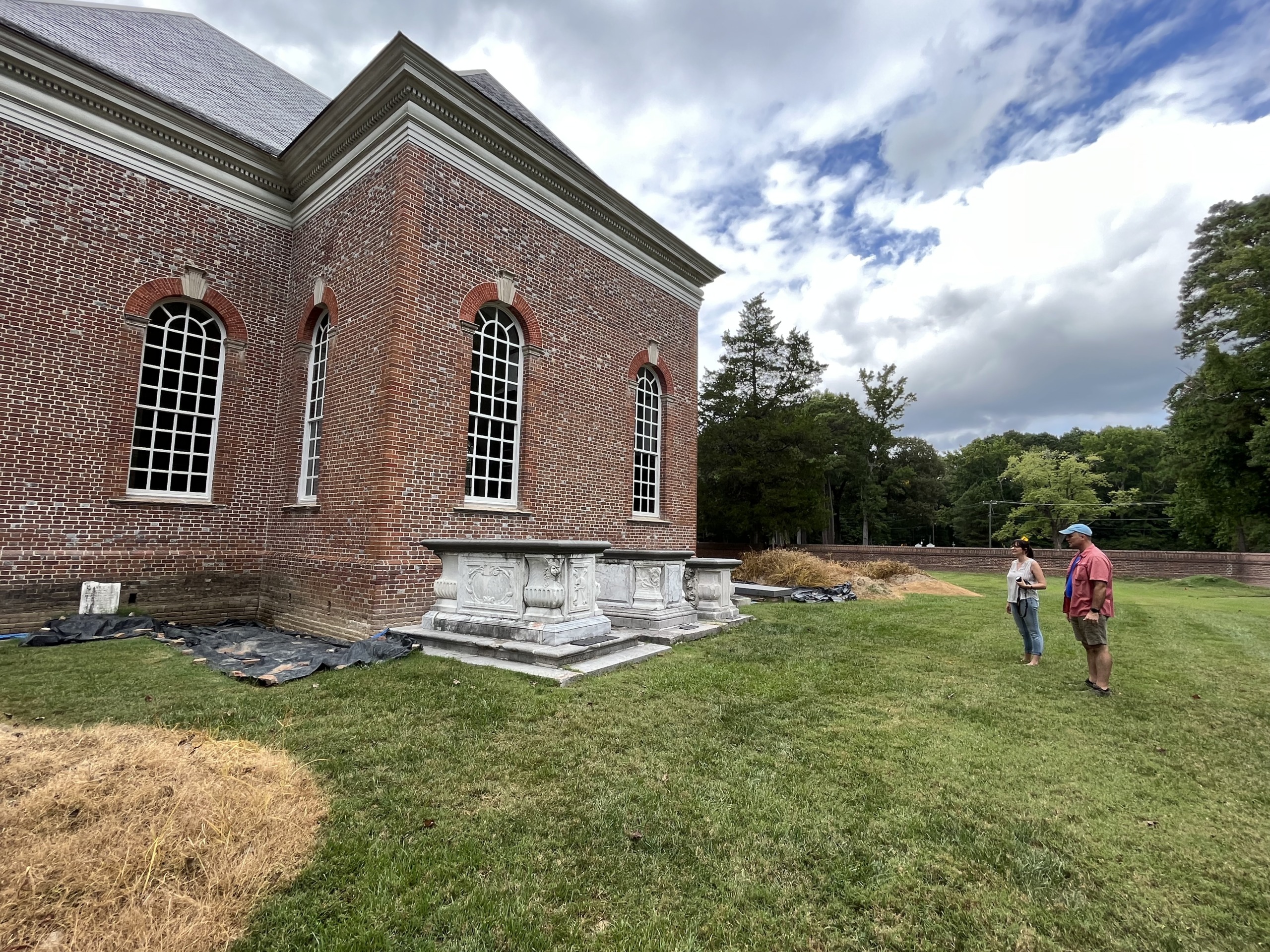
Dr. Raquel Fleskes from UConn and Dr. David Brown, Co-Director of the Fairfield Foundation, looking at the tombs of Carter family members. Photo credit: T.G. Schurr
John’s son, Robert “King” Carter, was born at the Corotoman plantation in 1663 and attended school in London, where he learned the trans-Atlantic tobacco trade. In 1690, Robert inherited his father’s Corotoman plantation, ultimately making it the center of a vast estate that would encompass forty-eight plantations, 300,000 acres, and over 700 slaves.
Robert held virtually every important political position in Virginia, including representative and speaker of the House of Burgesses, a member of the Governor’s Council, treasurer, and acting governor. He spent over four decades as vestryman and church warden for Christ Church Parish. Robert’s prodigious influence continued through his numerous offspring, who include three signers of the Declaration of Independence, two presidents, eight Virginia governors, General Robert E. Lee, a Supreme Court justice, and more than 20,000 other descendants.
In 1730, two years before his death, Robert began to build a brick church to replace his father’s 1670 frame church. His sons John, Charles, and Landon oversaw its completion after his death.
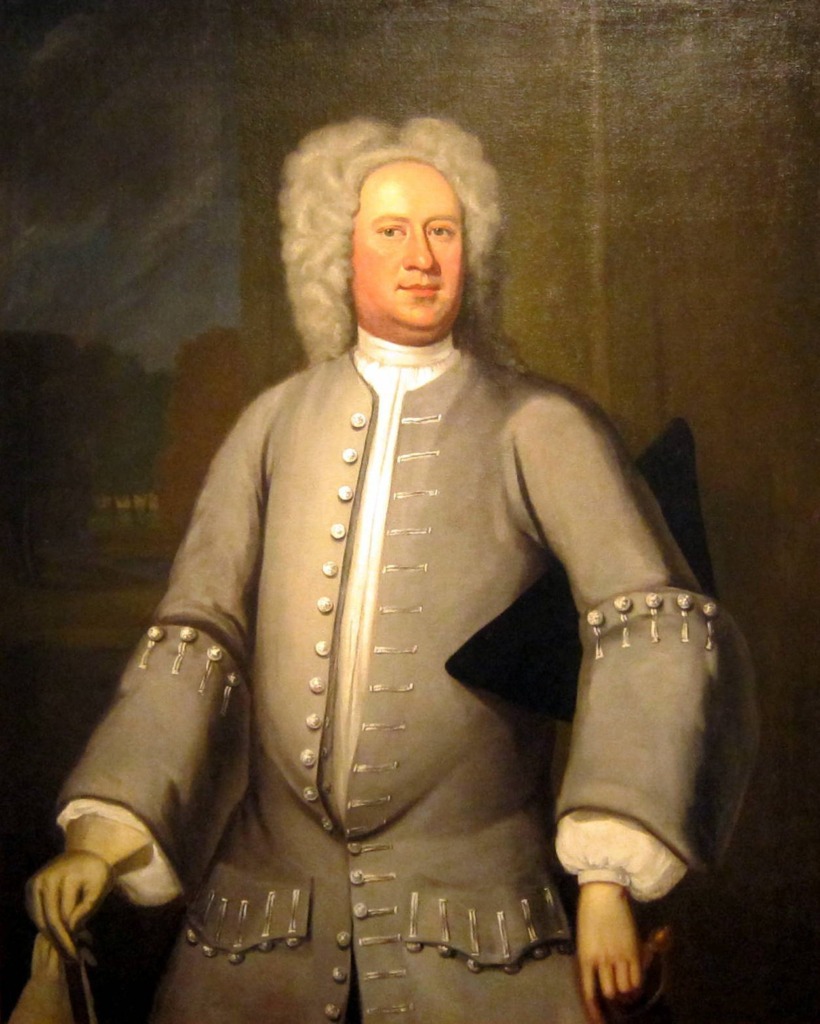
Robert “King” Carter (ca. 1664–1732), the richest and one of the most powerful Virginians of his day, is depicted in this oil portrait made circa 1720 by an unidentified artist. The painting is in the collection at the National Portrait Gallery in Washington, D.C.
Archaeological Excavations
DATA Investigations, LLC conducted a Phase II investigation of a portion of Site 44LA55 during October and November 2005 in order to evaluate the research potential and subsurface integrity of the possible location of the 1670 Christ Parish Church. The site was identified and delineated during a 1999 shovel test survey
DATA Investigations, LLC conducted a Phase II investigation of a portion of Site 44LA55 during October and November 2005 in order to evaluate the research potential and subsurface integrity of the possible location of the 1670 Christ Parish Church. The site was identified and delineated during a 1999 shovel test survey of the property owned by the Foundation for Historic Christ Church (Metz 1999; Brown et al. 2002). Designated by Metz as Loci 5, the site is located within the existing churchyard adjacent to the east side of the standing circa 1735 church, and extends at least as far east as the churchyard wall. Little is known about the earlier church except that its construction was undertaken by John Carter and the completed church was delivered to the vestry in July 1670. Details about its appearance and architectural form are unknown. The current project sought to identify the presence of subsurface features and their potential for yielding important information, allowing a deeper architectural understanding of the 1670 church. Following this work, a Phase III Investigation was conducted during September and October of 2006 to further investigate select features and artifact concentrations identified the previous season. The goals of this work were to confirm intact structural evidence of the 1670 church and contribute to a better understanding of the building’s size and appearance, as well as the evolution of the surrounding churchyard. The results of this phase of research were positive, and much has been learned about the situation and construction of this early frame church.
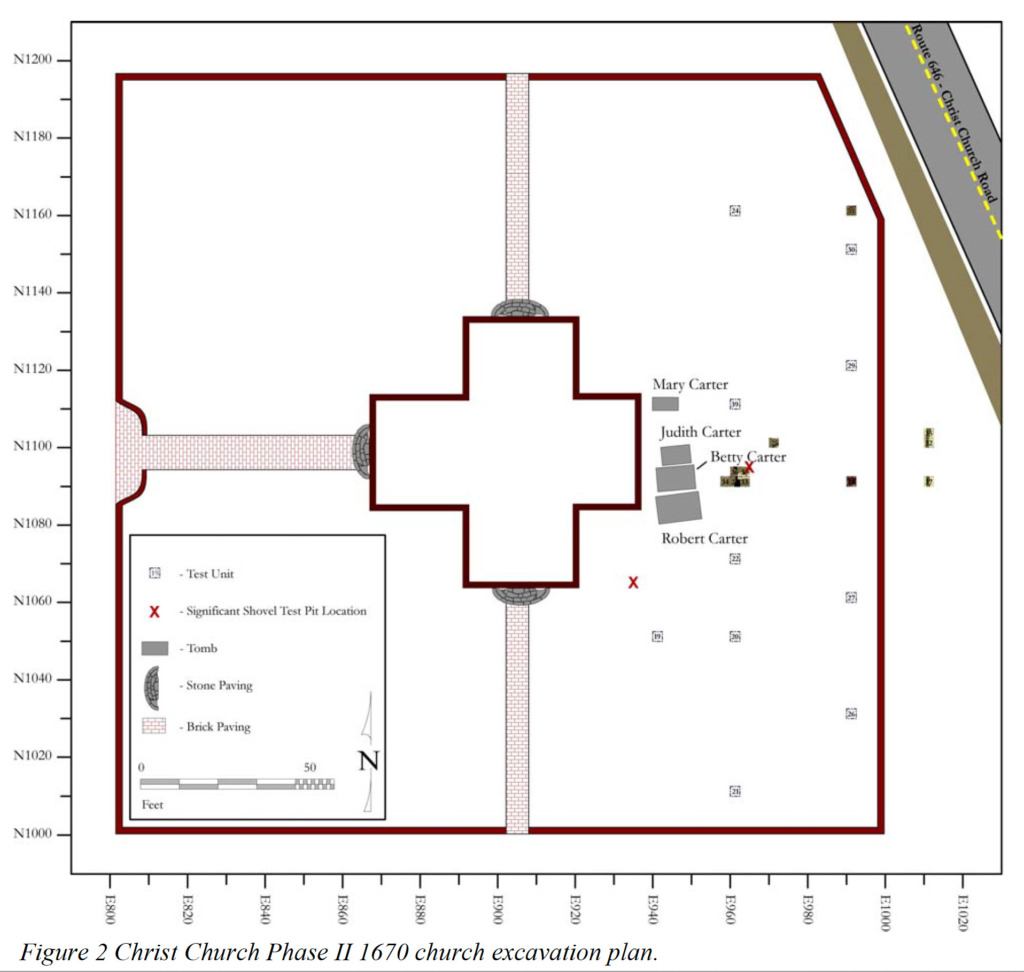
Historic church requires updated drainage system for church and surrounding burial ground. Initial excavations around the church disturbed graves located next to the structure and will potentially impinge upon others situated along the walkways from the wall of the churchyard to the church. Based on the new plan for installing the draining pipes, at least six burials will need to be excavated and moved.
The remains of the individuals who have to be relocated will be subjected to ancient DNA analysis to learn more about their ancestries and identities. This analysis will take place in the early-to-mid part of 2023.
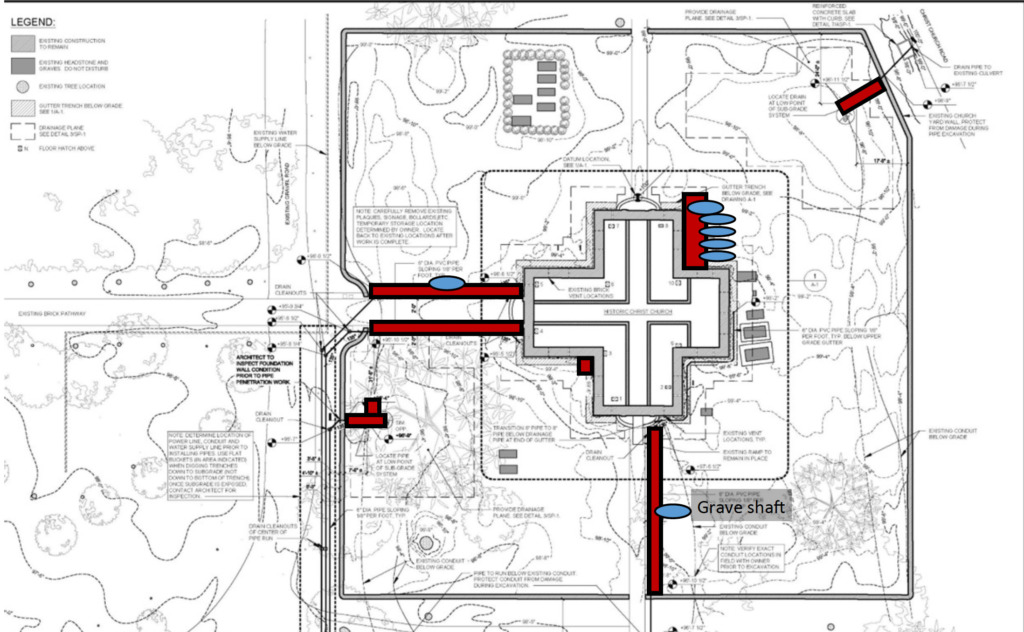
Historic church requires updated drainage system for church and surrounding burial ground. Initial excavations around the church disturbed graves located next to the structure and will potentially impinge upon others situated along the walkways from the wall of the churchyard to the church. Based on the new plan for installing the draining pipes, at least six burials will need to be excavated and moved.
The remains of the individuals who have to be relocated will be subjected to ancient DNA analysis to learn more about their ancestries and identities. This analysis will likely take place in mid-to late 2023.
More Information
Historic Christ Church & Museum Website: https://www.christchurch1735.org/about
Robert Carter: https://encyclopediavirginia.org/entries/carter-robert-ca-1664-1732/
The Fairfield Foundation: https://fairfieldfoundation.org/
Laboratory of Molecular Anthropology
University of Pennsylvania
421 University Museum
3260 South Street
Philadelphia, PA 19104-6398, USA
Tel: 215-573-2656

FOLOW US:
